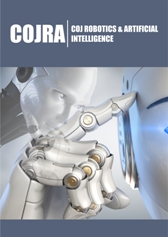- Submissions

Abstract
COJ Robotics & Artificial Intelligence
Autoencoder Based Multi-Class Classification Method For Alzheimer’s Disease Detection Using Brain MRI Data
-
Open or CloseTianming Zhu5, Carol Anne Hargreaves1*, Yi Xin Cheng1, Christopher Chen3,4,
and Saima Hilal2,4
1Department of Statistics and Data Science, Faculty of Science, National University of Singapore, Singapore
2Saw Swee Hock School of Public Health, National University of Singapore and National University Health System, Singapore
3The Memory, Ageing, and Cognition Centre (MACC), National University Health System, Singapore
4Department of Pharmacology, National University of Singapore, Singapore
5National Institute of Education, Nanyang Technological University
*Corresponding author:Carol Anne Hargreaves, Department of Statistics and Data Science, Faculty of Science, National University of Singapore, Singapore
Submission: March 6, 2024;Published: June 10, 2024

Abstract
Dementia is a decline in cognitive function and typically diagnosed when acquired cognitive impairment has become severe enough to compromise social and/or occupational functioning. From No Cognitive Impairment (NCI) to dementia, there are many intermediate states in between. Prediction of cognitive impairment will be helpful to start treatment to avoid possible further brain damage. In this paper, we attempt to classify unseen brain MRI images into three classes-CIND mild, CIND moderate and NCI. This was achieved by training three separate Autoencoders, each corresponding to one of the three classes. An unseen brain MRI image was then passed into each of these Autoencoders where it was then assigned to the class with the smallest reconstruction error returned by each of the Autoencoders. The dataset used to train the Autoencoders consisted of 537 T1 images that were drawn from the Singapore Epidemiology of Eye Disease (SEED) study. The images were pre-processed by performing skull stripping, cropping, resizing and intensity normalization. The three autoencoders managed to achieve an overall accuracy of 0.86 and the F1 score and precision were more than 0.7 for all three autoencoders. In this study, we demonstrated that the autoencoder model performed well on the classification of 3 different stages of dementia patients using T1 brain MRI images.
Keywords:Dementia; Autoencoders; Deep learning; Multi-Class classification; Magnetic resonance imaging
 a Creative Commons Attribution 4.0 International License. Based on a work at www.crimsonpublishers.com.
Best viewed in
a Creative Commons Attribution 4.0 International License. Based on a work at www.crimsonpublishers.com.
Best viewed in 







.jpg)






























 Editorial Board Registrations
Editorial Board Registrations Submit your Article
Submit your Article Refer a Friend
Refer a Friend Advertise With Us
Advertise With Us
.jpg)






.jpg)














.bmp)
.jpg)
.png)
.jpg)










.jpg)






.png)

.png)



.png)






